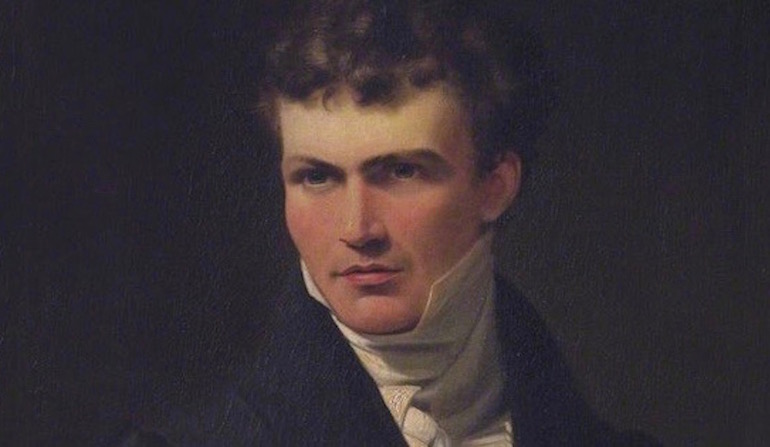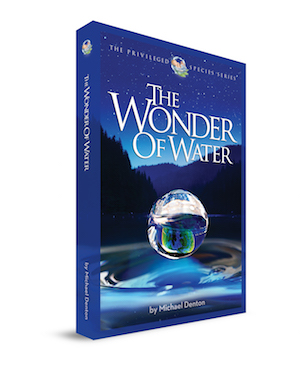 Intelligent Design
Intelligent Design
 Life Sciences
Life Sciences
Water — One of the Oldest Design Arguments


Today scientists marvel at the many associations among water chemistry, the environment, and life. The multiple anomalous properties of water conspire to make Earth exceptionally fit for life. (See, for example, here, as well as here, here, here, here, and more.)
The anomalies of water are not a recent revelation to science. They were already described in detail in 1913 by the Harvard chemist Lawrence J. Henderson in his classic work The Fitness of the Environment: An Inquiry into the Biological Significance of the Properties of Matter. By then, chemists had amassed sufficient data on the chemical elements and their compounds to show that water really does stand out from the crowd.
 It was about a century prior to Henderson’s work that chemists first measured the thermal properties of water (specific and latent heats). While water’s anomalous expansion on freezing had been known for some time, it was only in 1806 that the Scottish chemist Thomas C. Hope first measured the temperature of its highest density to be 4 degrees C. In that era of rapid discoveries in chemistry, water’s weirdness was quickly being established.
It was about a century prior to Henderson’s work that chemists first measured the thermal properties of water (specific and latent heats). While water’s anomalous expansion on freezing had been known for some time, it was only in 1806 that the Scottish chemist Thomas C. Hope first measured the temperature of its highest density to be 4 degrees C. In that era of rapid discoveries in chemistry, water’s weirdness was quickly being established.
It didn’t take long for mathematician and philosopher (and, later, opponent of Darwin’s theory of evolution) William Whewell to develop an argument for design based on these findings. He published his work in 1834 as part of the Bridgewater Treatise series on natural theology; it was titled Astronomy and General Physics Considered with Reference to Natural Theology. He listed multiple “offices” or functions of water, which convinced him of its design. Only three of these could be said to be true anomalies of water; the others are shared by liquids in general. Although this and earlier attempts to build a design argument on the properties of water were clumsy, the argument now had a solid core to build upon.
In 1853 Whewell developed an implication of the importance of water to life in his book Of the Plurality of Worlds: An Essay. In it he introduced a concept he termed the “temperate zone,” which is equivalent to the modern concept of the circumstellar habitable zone (CHZ). An Earth-like planet within the CHZ can maintain liquid water on its surface for lengthy periods of time. Today, the CHZ concept is central to astrobiology research.
Alfred Russel Wallace (of biological evolution fame) also recognized the centrality of liquid water for life. He took Whewell’s concept and refined and expanded it in his 1903 book, Man’s Place in the Universe: A Study of the Results of Scientific Research in Relation to the Unity or Plurality of Worlds. This work is significant both for its early presentation of anthropic arguments in addition to being a treatise on astrobiology. Although some of the science in his book is badly dated, many of his discussions sound remarkably modern. He would agree with NASA’s search-for-life maxim: follow the water.
The intervening century has only strengthened Henderson’s, Whewell’s and Wallace’s arguments regarding the remarkable connections between life and water. Evidence of Henderson’s continuing influence is the fact that the John Templeton Foundation sponsored a conference in October 2003 to mark the 90th anniversary of his work. It was titled, “Fitness of the Cosmos for Life: Biochemistry and Fine-Tuning.” Participants included astronomer Owen Gingerich, physicist Paul Davies, and biologist Harold Morowitz. Whether or not they agree with Henderson’s conclusions (and many do), many scientists still feel compelled to comment on them.
Not satisfied with the Templeton book, several scholars worked together to publish, in 2010, Water and Life: The Unique Properties of H2O; it is based on a meeting held in 2005. They include such notables in the science and faith dialogs as John Barrow and Simon Conway Morris. Michael Denton adds his name to this list of luminaries to ponder water in his latest book, The Wonder of Water: Water’s Profound Fitness for Life in Earth and Mankind.
Portrait: William Whewell, by James Lonsdale [Public domain], via Wikimedia Commons.
